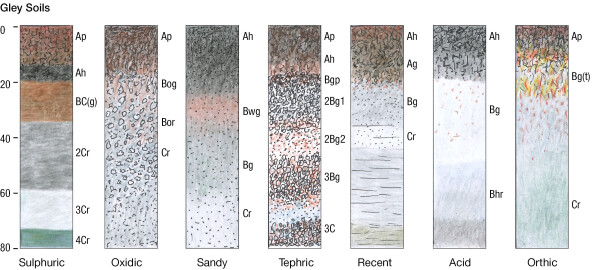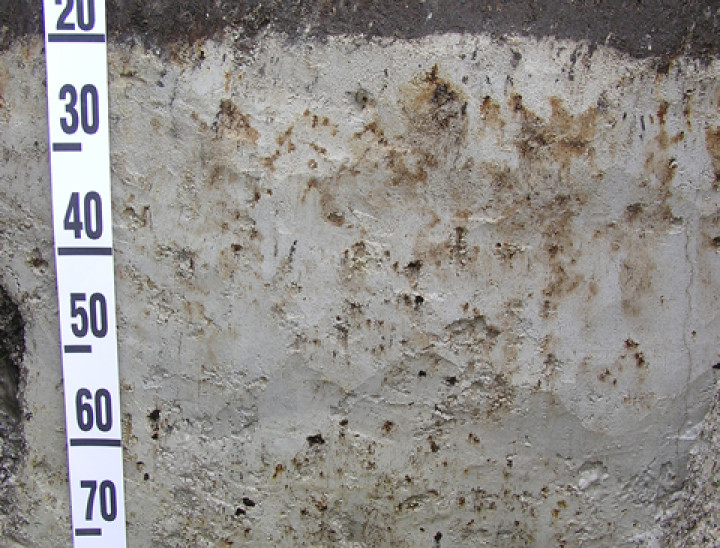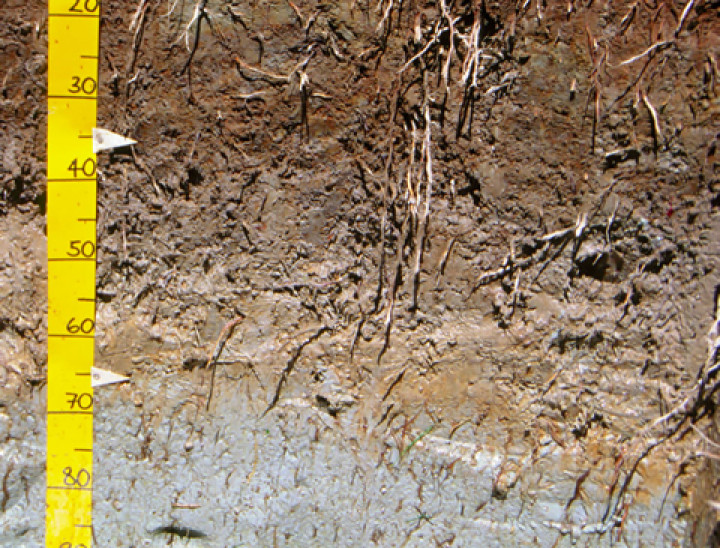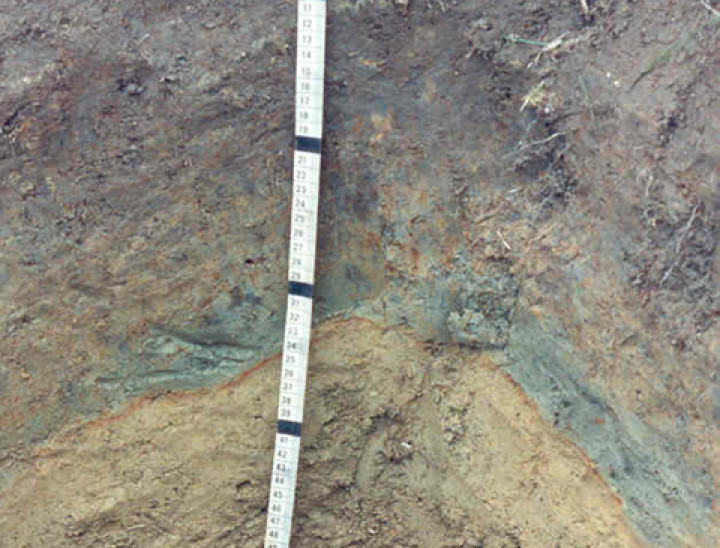Gley Soils [G]
Gley Soils, together with Organic Soils, represent the original extent of New Zealand wetlands, which have been greatly restricted in area by drainage
Gley Soils are strongly affected by waterlogging and have been chemically reduced. They have light grey subsoils, usually with reddish brown or brown mottles. The grey colours usually extend to more than 100 cm depth. Waterlogging occurs in winter and spring, and some soils remain wet all year.
Occurrence
Gley Soils occur throughout New Zealand in low parts of the landscape where there are high groundwater-tables, or in places where there are seepages. Large areas of Grey Soils have been artificially drained to form productive agricultural land. They cover 3% of New Zealand.
Physical properties
These soils have high groundwater-tables, shallow potential rooting depth, and relatively high bulk density. Trafficability is limited when soils are wet. Drainage is necessary for most agricultural development.
Chemical properties
Soils have common segregated iron and manganese oxide mottles, concretions or nodules. Organic matter content is usually high.
Biological properties
Many soil organisms are restricted because of anaerobic conditions.
Soil groups
Soil orders are divided into soil groups based on variation in factors such as drainage status, parent material, chemical and physical properties:
- [GU] Sulphuric Gley Soils — Sulphuric acid or the mineral jarosite in marine estuarine soils
- [GT] Tephric Gley Soils — Gley soils in tephric soil material
- [GS] Sandy Gley Soils — dominated by sand or loamy sand to depth
- [GX] Oxidic Gley Soils — similar to Oxidic Soils
- [GR] Recent Gley Soils — on young land surfaces, mainly alluvial or estuarine
- [GA] Acid Gley Soils — strongly or extremely acid
- [GO] Orthic Gley Soils — other Gley Soils



